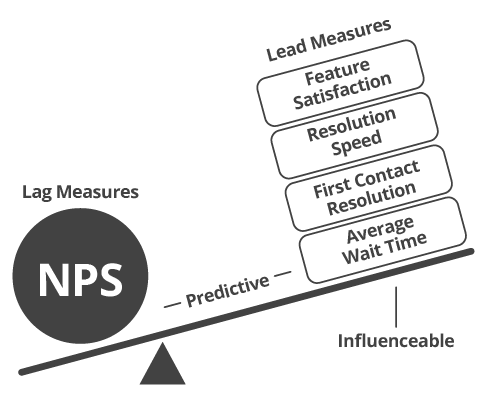
Article
Strategies that Stick: The Importance of Measuring Progress
Sean Pavlidis, Laura Richard — July 10, 2025
A strategic plan, no matter how visionary, is only as strong as its execution – this demands accountability that is cascaded through the organization and measurement of progress. When we are brought in to support leaders whose strategies aren’t sticking, often a lack clear accountabilities and inability to track progress are the underlying causes.
Our data supports this. 74% of leaders we surveyed believe that not measuring or managing progress significantly hinders their strategy’s success. Without meaningful metrics, teams are flying blind, unable to see what’s working, where to pivot, or how to celebrate the wins that build momentum. The consequences? Misaligned efforts, wasted resources, and strategies that stall before they stick. At Level5, we believe that robust measurement isn’t just an operational necessity, it’s the engine that powers strategy into action.
So where do organizations falter? Here are three common causes we see, and approaches to address them:
Goal Setting as an Afterthought
One of the most common pitfalls in strategic planning is treating goals as an afterthought. When goals are set in hindsight, they tend to be vague, qualitative, or disconnected from operational realities. They also are far more likely to be either too safe or wildly unrealistic. This leads to a weak foundation for execution: unclear success metrics, limited accountability, and difficulty tracking progress.
Solution: Build Measurement into the Planning Process
Bake measurement into the planning process from the very beginning. As strategies are developed, teams should simultaneously identify what success looks like, how it will be measured, and what data will be required. Doing so ensures that goals are not just aligned with the strategy, they reinforce it. Building goal setting into the planning process also allows leaders to set the right level of ambition by taking the target just beyond what feels comfortably attainable to unlock energy and innovation.
Accountability that Stops at the Top
Many strategic plans assign accountability at the executive level but stop there. When responsibility for key metrics doesn’t cascade throughout the organization, strategy execution becomes fragmented and inconsistent. Front-line teams are left unclear on how their work connects to broader goals, and middle managers struggle to prioritize competing demands. Without shared ownership, progress stalls and momentum fades.
Solution: Cascade Accountability Throughout the Organization
Cascade accountability intentionally from the C-suite to every corner of the organization. This means translating high-level strategic objectives into functional and team-level KPIs, with clear ownership at each level. Cascading responsibility creates alignment, empowers teams to act, and ensures that strategy is embedded into day-to-day decision-making. When done well, it turns measurement into a collective effort—owned, understood, and acted upon by the people closest to the work.
Measuring the Wrong Things at the Wrong Cadence
A common challenge in strategy execution is applying the same measurement cadence to every goal, regardless of its scale or scope. High-level strategic outcomes, like culture change, often evolve slowly and aren’t meaningful on a monthly dashboard. Tracking them too frequently can lead to noise, frustration, or premature pivots. At the same time, teams often lack visibility into the lead indicators that actually drive those outcomes. Without that line of sight, accountability becomes disconnected from daily execution.
Solution: Match Measurement Cadence to the Nature of the Goal

Match measurement cadence to the nature of the goal. Macro-level strategic objectives should be tracked semi-annually or annually, while operational and team-level lead indicators should be monitored more regularly. This layered approach to measurement ensures that teams can see how their day-to-day contributions impact long-term success.
For example, if a strategic goal is to improve customer loyalty, an outcome measure like Net Promoter Score (NPS) might be tracked at the enterprise level. However, because NPS shifts gradually, it’s not practical to review monthly. Instead, it should cascade into operational KPIs that teams can influence in real time. The Customer Support team might focus on first contact resolution or average wait time, while the Product team might monitor issue resolution speed or feature satisfaction. These lead indicators are measured more frequently and provide the insight and control teams need to move the broader loyalty metric over time.
Paired with cascaded accountability, the appropriate measures allow organizations to stay agile in the short term while remaining focused on strategic outcomes over the long term.
Conclusion
Even the most well-crafted strategic plan will fall short without a measurement system designed to support it. When goals are vague or misaligned, accountability doesn’t cascade, and metrics are applied inconsistently, organizations lose traction. They aren’t minor missteps, they’re the reasons strategies stall.
The solution is to treat measurement as a foundational element of strategic planning. That means setting clear goals early, cascading accountability through every layer of the organization, and establishing the right cadence for tracking progress – from high-level outcomes to everyday lead indicators. When measurement is built into the strategy itself, it does more than track performance, it drives it. And that’s how strategy sticks.
At Level5 Strategy, an award-winning boutique management consulting firm trusted by leading organizations, we help businesses navigate challenges in strategic planning with the right tools and insights. Whether you’re exploring our unique approach to setting actionable and meaningful goals or tracking your KPIs with the right cadence, our experienced team delivers the solutions and hands-on support needed to drive lasting success. For more expert perspectives on strategic planning, explore our latest thinking or connect with our consultants.




